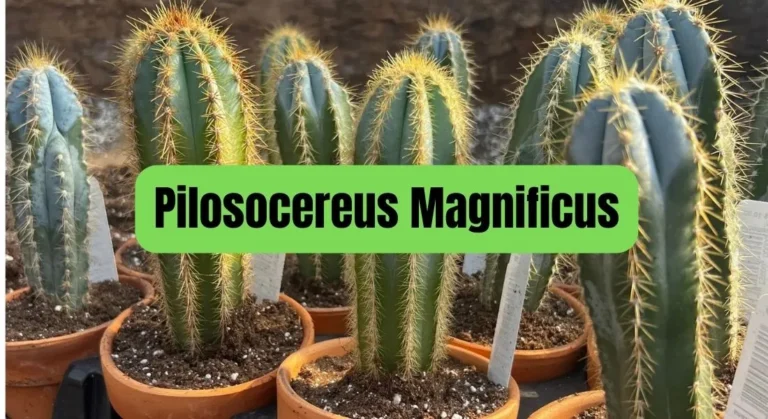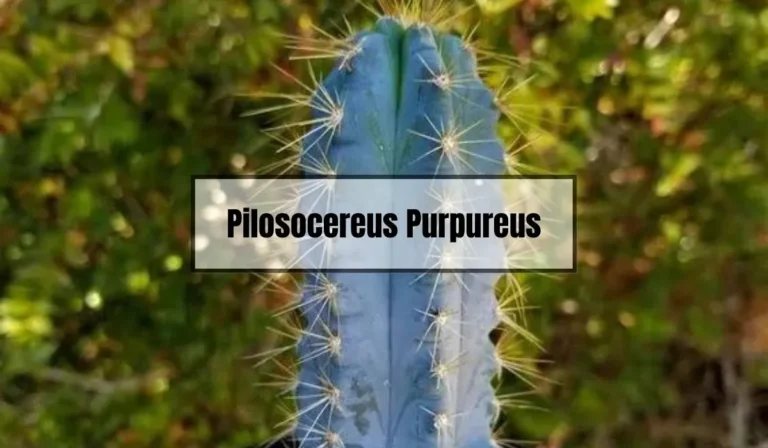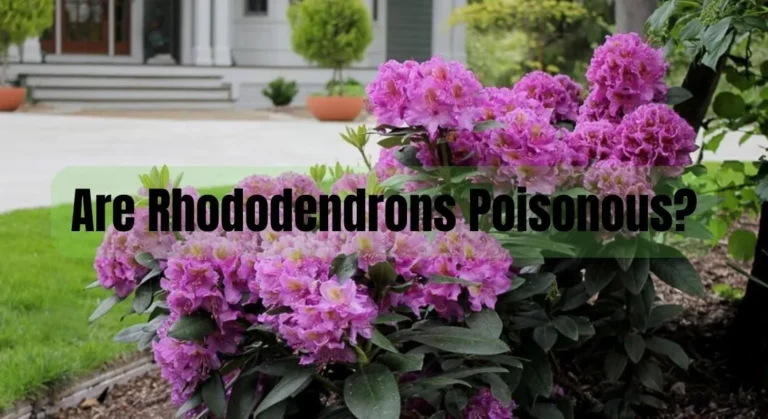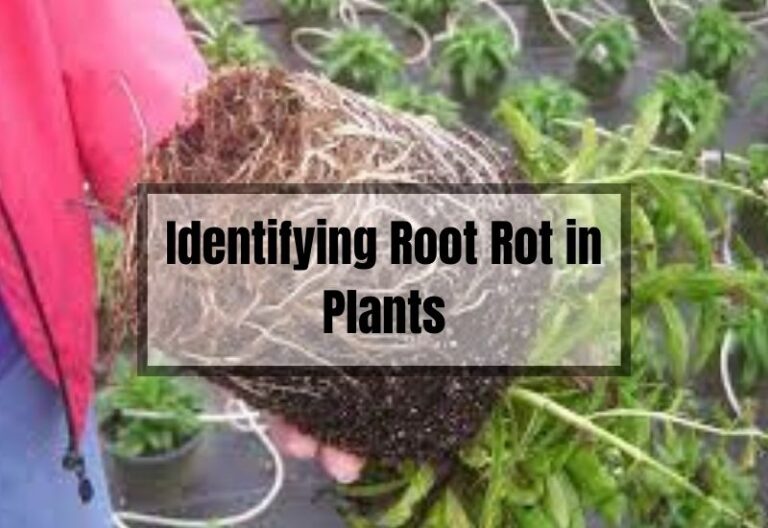Companion Planting Guide: How to Grow a Thriving Garden with the Right Plant Pairings
Companion planting is a gardening technique that involves planting different crops together to achieve mutual benefits. It is an age-old practice that has been used by farmers and gardeners for centuries.
Companion planting can help improve soil fertility, control pests and diseases, and increase yields. In this article, you will learn everything you need to know about companion planting and how to use it in your garden.

Understanding Companion Planting Companion planting involves planting different crops together to achieve mutual benefits. Certain plants have natural pest-repelling properties, while others can improve soil fertility or attract beneficial insects. By planting these crops together, you can create a healthy and balanced garden ecosystem. Understanding the principles of companion planting can help you choose the right plants to grow together and avoid potential problems.
The Role of Companion Planting in Gardening Companion planting is an essential gardening technique that can help you achieve a more productive and healthy garden. By planting different crops together, you can create a diverse and balanced ecosystem that can help control pests and diseases, improve soil fertility, and increase yields.
Whether you are growing vegetables, herbs, or flowers, companion planting can help you achieve your gardening goals. In the following sections, we will explore some of the most common companion planting pairs and how to use them in your garden.
Key Takeaways
- Companion planting involves planting different crops together to achieve mutual benefits.
- Understanding the principles of companion planting can help you choose the right plants to grow together and avoid potential problems.
- Companion planting is an essential gardening technique that can help you achieve a more productive and healthy garden.
Understanding Companion Planting

Companion planting is the practice of planting different plant species together to benefit each other in some way. This technique has been used by gardeners for centuries to improve crop yields, reduce pest and disease problems, and create a more diverse and sustainable garden ecosystem.
The idea behind companion planting is that certain plants have natural affinities for each other and can help each other grow better. For example, some plants have the ability to fix nitrogen in the soil, which can benefit other plants that require nitrogen to grow. Other plants have strong scents that can repel pests, while others can attract beneficial insects that can help control pests.
One of the key benefits of companion planting is that it can help reduce pest and disease problems in your garden. By planting certain plants together, you can create a more diverse and balanced ecosystem that is less susceptible to pest and disease outbreaks. For example, planting marigolds with tomatoes can help repel nematodes, while planting basil with tomatoes can help repel aphids.
Another benefit of companion planting is that it can help improve soil fertility and structure. By planting certain plants together, you can create a more diverse and balanced soil ecosystem that is better able to hold nutrients and water. For example, planting legumes like beans and peas can help fix nitrogen in the soil, which can benefit other plants that require nitrogen to grow.
Companion planting can also help improve crop yields by creating a more diverse and balanced garden ecosystem. By planting a variety of plants together, you can create a more resilient garden that is better able to withstand environmental stresses like drought, heat, and cold.
The Role of Companion Planting in Gardening

Companion planting is a gardening technique that involves planting different crops together for mutual benefit. This practice has been around for centuries and is based on the idea that certain plants can help each other grow better.
One of the main benefits of companion planting is pest control. Some plants are natural repellents for certain pests, and planting them alongside susceptible crops can help to deter pests from attacking. For example, planting marigolds alongside tomatoes can help to repel nematodes, which can damage the roots of tomato plants.
Another benefit of companion planting is improved soil health. Certain plants have deep root systems that can help to break up compacted soil, allowing air and water to penetrate more easily. Additionally, some plants are nitrogen-fixers, which means they can convert atmospheric nitrogen into a form that is available to other plants. This can help to improve soil fertility and reduce the need for synthetic fertilizers.
Companion planting can also help to attract beneficial insects, such as pollinators and predators of garden pests. For example, planting flowers like lavender or borage alongside vegetables can help to attract bees and other pollinators, which can increase yields. Additionally, planting herbs like parsley or dill can attract predatory insects like ladybugs or lacewings, which can help to control pests like aphids.
Common Companion Planting Pairs
When it comes to companion planting, some plants work better together than others. Here are some common companion planting pairs to consider for your vegetable garden:
- Tomatoes and Basil: Tomatoes and basil are a classic companion planting pair. Basil repels pests that can harm tomatoes and enhances their flavor.
- Carrots and Onions: Carrots and onions make great companions because they repel pests that can harm each other. Onions also improve the flavor of carrots.
- Cucumbers and Radishes: Cucumbers and radishes are a great pairing because radishes repel cucumber beetles, which can damage cucumber plants.
- Lettuce and Chives: Lettuce and chives are a good pairing because chives repel aphids, which can damage lettuce plants.
- Corn, Beans, and Squash: Corn, beans, and squash are often planted together in a technique called the Three Sisters. Corn provides a structure for beans to climb, beans fix nitrogen in the soil, and squash shades the soil and helps deter pests.
When planning your companion planting pairs, keep in mind that not all plants get along. For example, beans and onions should not be planted together because they can stunt each other’s growth. Similarly, tomatoes and potatoes should not be planted together because they are both susceptible to the same diseases.
To make the most of your companion planting pairs, consider using a companion planting chart or guide. These resources can help you determine which plants work well together and which should be kept apart.
Companion Planting with Herbs
Herbs are a great addition to any garden, not only for their culinary uses but also for their ability to repel pests and attract beneficial insects. When it comes to companion planting with herbs, there are a few things to keep in mind.
First, it’s important to consider the growth habits of the herbs you want to plant. Some herbs, like mint and lemon balm, can be quite invasive and should be planted in pots or contained areas. Other herbs, like basil and parsley, do well when planted together in the same bed.
Another thing to keep in mind is which herbs pair well with which vegetables. For example, basil is a great companion for tomatoes, while thyme and sage do well with cabbage and other brassicas. Rosemary and chives are also great companions for many different vegetables.
Here’s a quick reference guide for some common herbs and their companion plants:
| Herb | Companion Plants |
|---|---|
| Basil | Tomatoes, peppers, oregano |
| Chives | Carrots, tomatoes, peas |
| Dill | Cabbage, lettuce, cucumbers |
| Mint | Cabbage, tomatoes, peppers |
| Oregano | Tomatoes, peppers, eggplant |
| Rosemary | Cabbage, beans, carrots |
| Sage | Cabbage, beans, carrots |
| Thyme | Cabbage, eggplant, tomatoes |
Keep in mind that companion planting with herbs is not an exact science and what works for one garden may not work for another. It’s important to experiment and see what works best for your specific situation.
Companion Planting in Vegetable Gardens
Companion planting refers to the practice of planting different crops together so that they can benefit each other. It is a natural way of controlling pests, improving soil fertility, and increasing crop yield. Here are some tips for successful companion planting in your vegetable garden:
Choose Complementary Plants
When selecting plants for your vegetable garden, consider their compatibility. Some plants have natural affinities for each other and will thrive when planted together.
For example, beans fix nitrogen in the soil, which is beneficial for corn, while marigolds repel pests that can damage tomatoes. You can find a comprehensive list of companion plants in the search results.
Avoid Incompatible Plants
Just like some plants complement each other, others do not get along well. For instance, planting tomatoes and potatoes together can lead to the spread of blight disease.
Similarly, planting onions and beans together can stunt the growth of both crops. Therefore, it is essential to research which plants are incompatible and avoid planting them together.
Use Succession Planting
Succession planting is the practice of planting different crops in the same space at different times. This ensures that the garden remains productive throughout the growing season.
For example, you can plant lettuce and radishes together in the early spring, followed by beans and corn in the summer, and then broccoli and cauliflower in the fall.
Incorporate Companion Plants in Crop Rotation
Crop rotation is the practice of planting different crops in the same space over several years. It helps to prevent soil-borne diseases and pests from building up in the soil.
By incorporating companion plants in your crop rotation, you can further improve soil fertility and reduce pest problems.
Companion Planting in Flower Gardens
If you’re planning a flower garden, companion planting can help you create a beautiful and healthy garden. Companion planting is the practice of planting certain plants together to benefit each other. Here are some tips for companion planting in your flower garden:
Benefits of Companion Planting in Flower Gardens
Companion planting in flower gardens can provide many benefits, such as:
- Attracting pollinators: Planting flowers that attract bees, butterflies, and other pollinators can help pollinate your garden and increase your flower yield.
- Natural pest control: Some flowers can repel pests or attract beneficial insects that prey on pests, reducing the need for harmful pesticides.
- Improved soil health: Certain flowers can improve soil health by adding nutrients or fixing nitrogen in the soil.
- Aesthetic appeal: Companion planting can create a visually appealing garden by combining flowers with complementary colors, textures, and shapes.
Best Companion Plants for Flower Gardens
Here are some popular companion plants to consider for your flower garden:
| Flower | Companion Plants |
|---|---|
| Marigold | Attracts beneficial insects, repels pests |
| Lavender | Attracts pollinators, repels pests |
| Cosmos | Attracts pollinators, repels pests |
| Zinnia | Attracts pollinators |
| Sunflower | Attracts pollinators, adds nutrients to soil |
Flowers as Companion Plants
Flowers can also be used as companion plants for other types of plants. For example, planting marigolds with tomatoes can help repel pests that commonly attack tomato plants. Similarly, planting nasturtiums with squash can deter squash bugs and other pests.
Companion Planting Mistakes to Avoid
While companion planting can be beneficial, there are some common mistakes to avoid:
- Planting incompatible plants together: Some plants can actually harm each other when planted together. For example, planting tomatoes and fennel together can stunt the growth of both plants.
- Planting too closely together: Overcrowding plants can lead to competition for resources and reduced growth.
- Not considering plant height: Planting tall plants in front of shorter plants can block sunlight and reduce growth.
By following these tips, you can create a beautiful and healthy flower garden with companion planting.
Avoiding Bad Companions in the Garden
When it comes to companion planting, it’s not just about choosing good companions, but also avoiding bad ones.
Certain plants can have negative effects on others, either by attracting pests or competing for resources. Here are some tips to help you avoid bad companions in your garden:
1. Keep Nightshades Apart
Nightshade plants, such as tomatoes, peppers, and eggplants, should be kept separate from plants in the Brassica family, such as broccoli, cauliflower, and cabbage. These two families are incompatible and can stunt each other’s growth.
2. Don’t Mix Herbs and Vegetables
While herbs and vegetables can make great companions, it’s important to keep them separate in the garden. This is because herbs can release chemicals that can stunt the growth of certain vegetables, such as beans and peas.
3. Avoid Planting Certain Vegetables Together
Some vegetables just don’t get along with each other. For example, onions and beans are incompatible and can stunt each other’s growth. Similarly, carrots and dill should not be planted together, as dill can attract pests that will damage the carrots.
4. Keep Mint Contained
Mint is a great herb to have in the garden, but it can quickly take over if not kept in check. It’s best to plant mint in a container or in a designated area of the garden to prevent it from spreading and taking over other plants.
5. Be Careful with Companion Planting Charts
While companion planting charts can be a helpful guide, it’s important to use them with caution. Not all plants will have the same effects on each other in every garden, and some combinations that work well for one gardener may not work for another.
By following these tips and doing your research, you can avoid bad companions in your garden and create a thriving, healthy ecosystem for your plants.
Companion Planting Chart and Tips
When planning your vegetable garden, companion planting can be a useful technique to improve plant health, increase yields, and reduce pest problems. Here are some tips and a companion planting chart to help you get started.
Companion Planting Chart
| Vegetable | Companion Plants |
|---|---|
| Asparagus | Tomato, parsley, basil |
| Beans | Carrots, cucumbers, corn |
| Cabbage | Celery, onions, dill |
| Carrots | Peas, lettuce, onions |
| Corn | Cucumbers, beans, peas |
| Cucumbers | Corn, beans, peas |
| Lettuce | Carrots, radishes, onions |
| Onions | Carrots, beets, lettuce |
| Peas | Carrots, radishes, turnips |
| Tomatoes | Basil, parsley, carrots |
Tips for Companion Planting
- Choose plants with similar needs: When pairing plants, make sure they have similar water, light, and soil requirements. For example, tomatoes and peppers both need full sun and well-draining soil, so they make good companions.
- Plant tall plants with short plants: Planting tall plants like tomatoes or corn with shorter plants like lettuce or radishes can help maximize space and provide shade for the shorter plants.
- Use plants to repel pests: Some plants, like marigolds and garlic, are known to repel pests. Planting these alongside your vegetables can help keep pests away naturally.
- Rotate crops: To avoid soil-borne diseases and pest problems, rotate your crops each year. This means planting different types of vegetables in different areas of your garden each year.
- Avoid planting certain combinations: Some plants don’t do well together and can actually harm each other. For example, planting tomatoes and potatoes together can increase the risk of blight, while planting beans and onions together can stunt growth.
Companion planting can take some trial and error, but it’s a great way to improve your garden’s health and productivity. Use this chart and these tips to get started and see what works best for your garden.
Implementing Companion Planting in Your Garden
If you’re new to companion planting, it might seem overwhelming to figure out which plants to pair together. But don’t worry, it’s not as complicated as it seems. Here are some tips to help you implement companion planting in your garden:
Start with the basics
Begin by planting some of the most common companion plants, such as marigolds, basil, and chives. These plants are easy to grow and can help repel pests and attract beneficial insects.
Consider plant compatibility
When choosing which plants to pair together, it’s important to consider their compatibility. Some plants have a symbiotic relationship, while others can inhibit each other’s growth.
For example, tomatoes and basil are great companions, as basil can help repel pests that attack tomatoes. On the other hand, beans and onions should not be planted together, as they can stunt each other’s growth.
Utilize companion planting charts
Companion planting charts can be a helpful tool when planning your garden. These charts provide information on which plants are compatible with each other and which are not. You can find many of these charts online, or even create your own.
Rotate your crops
Crop rotation is an important aspect of companion planting. By rotating your crops each year, you can help prevent soil-borne diseases and pests from building up in your garden.
For example, if you plant tomatoes in one bed one year, plant a different crop in that bed the following year to help prevent tomato-specific pests and diseases from taking hold.
Experiment and observe
Every garden is different, and what works for one gardener may not work for another. Experiment with different companion planting combinations and observe how your plants grow and interact with each other. Over time, you’ll learn which combinations work best for your garden.
By implementing companion planting in your garden, you can help create a more diverse and healthy ecosystem. Not only will your plants thrive, but you’ll also be doing your part to support beneficial insects and wildlife.





